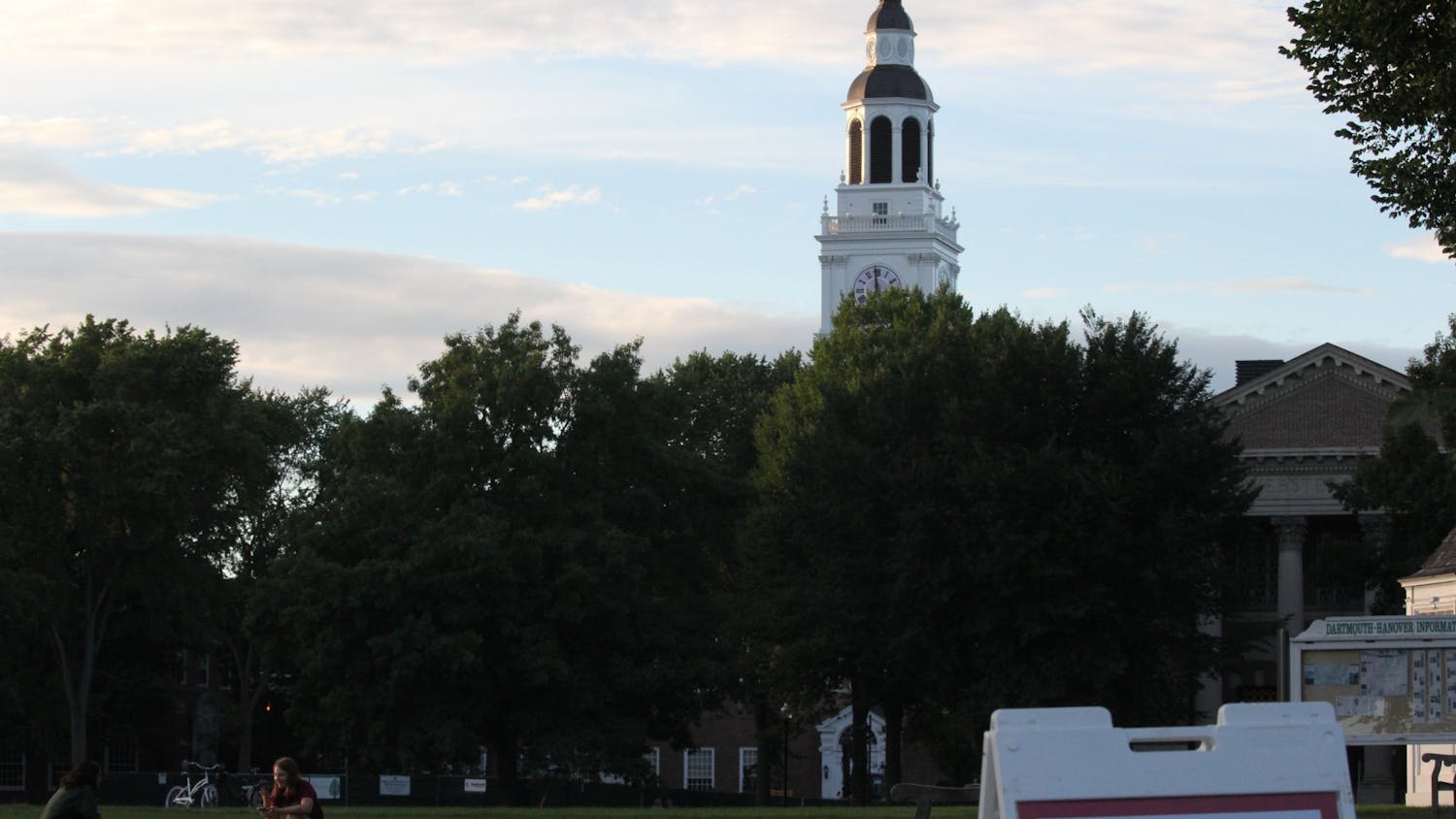Based on Instagram alone, it would seem like there’s not a person on campus who hasn’t been to Gile Mountain this term. Scrolling through all the pictures of Dartmouth students smiling at the top of the fire tower takes almost as long as climbing the mountain itself.
That being said, Gile isn’t the most challenging of climbs. The whole hike takes maybe 30 minutes, with an elevation gain of only around 400 feet. Views from the summit are beautiful, but Gile has only recently become such a fixture of Dartmouth outdoor life. Elliot Ng ’21, vice president of the Dartmouth Outing Club, said that he didn’t hike Gile until his late sophomore or early junior year. Yet freshmen now flock to Gile, perhaps in an attempt to make up for their lost First-Year Trips. While the 1.4-mile hike is by no means a substitute for five days trekking through the woods, students still hike Gile searching for something similar: a sense of Dartmouth community.
With all the restrictions students face during the pandemic, smaller outings like Gile have taken on greater significance. Even without kayaking down waterfalls or sleeping outside in tents, and without overcoming great trials that result in lasting connections, the minutes spent walking up Gile still constitute an outing. And in a time when outings are limited, simple excursions allow Dartmouth students to experience at least a glimpse of the Upper Valley.
“Because campus itself is so small, it’s kind of easy to feel like this is all there is,” Sami Lofman ’24 said. “It’s really nice to get off campus and see where we’re located.”
Outdoor activities can also expose Dartmouth students to new experiences that they might not have enjoyed back home. Ng pointed out that some students come from places that don’t have the vivid seasonal changes of New England, which means this is their first time seeing fall foliage.
“The best part is seeing people’s reactions,” Ng said. “As someone who now has a lot more experience being on peaks and being in crazy places, that’s always a delight to see.”
Still, not everyone gets to join in. This term, the reduced on-campus population and new safety restrictions mean that there are only limited spots available on DOC trips. As a result, some students have organized their own outings. For example, Lofman recently went on a “sunrike” that she arranged independently with some friends.
While self-organized trips can deepen connections between students, they are often less successful at forming new ones. One of the Dartmouth trips that Ng enjoyed most was his freshman year spring break trip to the Red Rock Canyon National Conservation Area in Nevada. Ng said that the trip let him meet new people in his class as well as older student mentors, many of whom he is still close to today. By organizing outings among an already-established friend group, students lose the chance to create connections with new people.
Meanwhile, many students living away from campus are unable to participate in any Upper Valley activities, whether organized individually or by the DOC. For them, the influx of Gile pictures on social media may highlight their distance from the Dartmouth community.
Heather Damia ’24, who is currently living in upstate New York, finds that while the academic experience feels basically the same from home, “the community experience” is what she misses. Damia said that she recently went on a walk in her town while on FaceTime with a friend in Hanover. Like any walk, that experience allowed her to enjoy the outdoors. But for Dartmouth students, going on a walk with friends isn’t just about being outside — it’s about being outside at Dartmouth.
“There’s a sense of longing to just be there and see what everyone else is seeing,” Damia said.
Lofman also feels that the physical landscape around Dartmouth plays a large role in shaping the College community.
“What sets Dartmouth apart from other schools is that it’s not just an academic environment — it’s also the physical environment that you’re in,” Lofman said. She added that now that it’s harder to connect with people, enjoying these beautiful physical spaces helps define the Dartmouth community.
Earlier this month, Vermont’s state government asked visitors from Grafton County to quarantine if entering Vermont for “nonessential travel.” For students living in Hanover, Gile now sits officially out of reach across the Connecticut River.
The leaves are changing color, and we have a few sunny days left on the Green. As boundaries continue to shift in the weeks ahead, it is important to embrace smaller trips, whether that’s a walk with a friend on FaceTime, a walk to CVS or a walk back from Novack at 3 a.m. Though more mundane than climbing a mountain, these experiences still build connections. It doesn’t take a photo of yourself at Gile to be part of the Dartmouth community.





